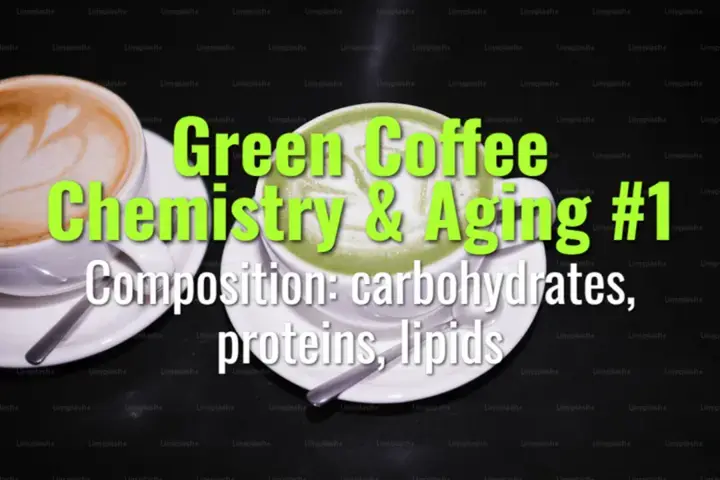Composition: carbohydrates, proteins, lipids
This topic explains the major chemical components of green coffee—carbohydrates, proteins, and lipids—their roles in green coffee stability, and their transformation during roasting.
- Coffee Basics Nerds
- 2 min read
Article 1 of 12 in Green Coffee Chemistry & Aging/

Carbohydrates
- Content: ~50–55% of green coffee by dry weight.
- Types:
- Polysaccharides: cellulose, hemicellulose (structural integrity).
- Sucrose: ~6–9% in Arabica, ~3–7% in Robusta; crucial for sweetness and caramelization.
- Roasting role: Breakdown of sucrose contributes to browning (Maillard and caramelization) and aromatic compounds.
- Stability: Higher sucrose linked with better flavor complexity but also more degradation during storage.
Proteins
- Content: ~10–13% of green coffee.
- Role: Provide amino acids that participate in Maillard reactions during roasting.
- Importance: Directly contribute to flavor precursors (nutty, roasted, chocolate notes).
- Storage impact: Proteins relatively stable, but enzymatic activity in poorly stored beans may degrade them.
Lipids
- Content: ~10–15% of green coffee.
- Composition: Triglycerides, diterpenes (cafestol, kahweol), and free fatty acids.
- Location: Mostly stored in the endosperm.
- Roasting role: Retain volatile aroma compounds; key for body and mouthfeel.
- Stability: Susceptible to oxidation → rancidity, loss of aroma retention over time.
Other Components (Context)
- Alkaloids: caffeine (~1–2% Arabica, 2–4% Robusta).
- Chlorogenic acids: polyphenols contributing to bitterness and acidity.
- Minerals and water: minor but important for reactivity.
Quality & Market Implications
- Arabica: higher sucrose → sweeter, more complex flavors.
- Robusta: higher protein and chlorogenic acids → stronger, harsher taste.
- Lipid content affects crema in espresso and flavor persistence.
Lasting Importance
The balance of carbohydrates, proteins, and lipids defines coffee’s potential flavor profile. These compounds act as the raw materials for roasting chemistry, determining sweetness, aroma complexity, and body in the cup while also influencing coffee’s storage stability and aging process.